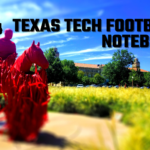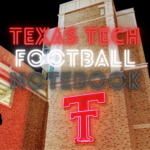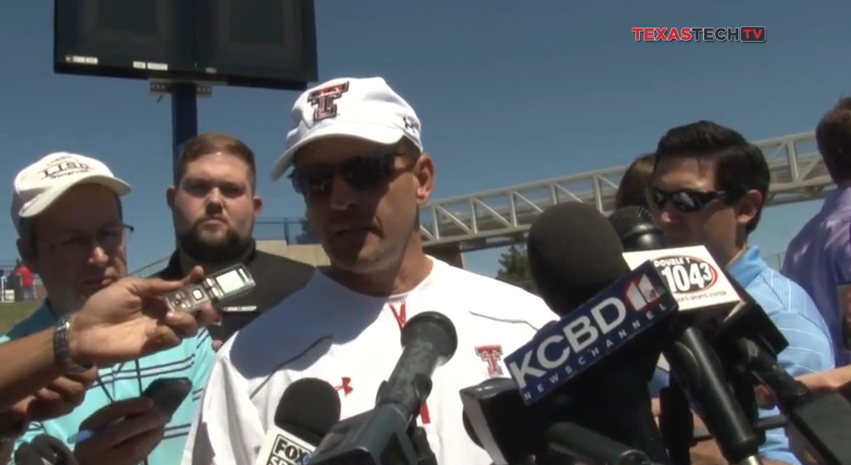In 2014, David Gibbs and Houston had the 20th best total defense and the transformation for the Cougars was pretty much complete. Let’s discuss what Gibbs improved about the Houston defense and how he did it.
In 2014, Houston allowed 343.4 yards a game, the 37th best rush defense, allowing 143.31 yards a game and the 28th best pass defense, where the Cougars allowed 200.1 yards a game. Houston only allowed 20.6 points a game, good for 15th best in the nation.
In 2012, before Gibbs arrives, things were a tad bit different, at least in terms of traditional metrics.
Let’s start with some pretty pictures.

| Year | Scoring Defense | Rush Defense | Pass Defense | Total Defense |
|---|---|---|---|---|
| 2012 | 110 | 93 | 118 | 118 |
| 2013 | 20 | 44 | 110 | 80 |
| 2014 | 15 | 37 | 28 | 20 |

| Year | Rush Defense | Pass Defense | Total Defense |
|---|---|---|---|
| 2012 | 192.75 | 290.3 | 483 |
| 2013 | 149 | 266.8 | 415.8 |
| 2014 | 143.31 | 200.1 | 343.4 |
Used What He Had
You would maybe think that Gibbs had this huge influx of players and that wasn’t the case at all. In fact, Gibbs really took a lot of what was recruited in 2012 and just used those pieces and players. Don’t get me wrong, he had a pretty big class on the defensive side of the ball in 2013, but the leaders of the 2013 defense weren’t those guys. It was guys who had already been there. Players like ATH Adrian McDonald, who was moved to cornerback and Trevon Stewart. As an aside, both are smallish cornerbacks, in the 5’10” range. Also big was an undersized linebacker in Steven Taylor, 6’1″ and 205 (only a 2-star player), while junior linebacker Efrem Oliphant and Derrick Matthews lead the team in tackles. On the defensive line, it was also guys who had been there, juniors Jeremiah Farley, Trevor Harris, Eric Braswell and Joey Mbu, while Gibbs did play a true freshman, Tyus Bowser, a 3-star linebacker from John Tyler
Quite simply, there was not this huge influx of players that came in and were saviors. It was largely guys that had arrived the year before and contributed to what was already there.
Batting Down the Passes
In 2012, Houston defended 76 passes, 57 passes broken up and intercepting 19. The problem, as demonstrated above, was that they gave up a ton of yards to go along with it. Not only that, but opposing teams threw for 25 touchdowns against Houston in 2015. The script flipped pretty much immediately as Houston went from 13th in passes defended to 7th in the nation, breaking up 55 and intercepting 25, while only allowing 15 touchdown passes to 25 interceptions. That trend continued in 2014, although those havoc stats dropped a bit, as Houston fell to 49th overall, tipping 41 passes and intercepting 19. The biggest difference between 2013 and 2014? Yards per attempt dropped from 7.0 in 2013 to 6.3 in 2014 and those touchdown passes against the defense remained at 15 in 2014 as well.
Shoring Up the Run Game
In 2012, Houston was 93rd overall in rush defense, allowing 4.44 yards a rush and over 2,300 yards. That’s about 192 yards a game allowed on the ground and 25 touchdowns. In 2013, that number dropped by 40 yards, down to 149 yards a game and only 18 touchdowns and 3.6 yards per attempt. In fact, of those 18 touchdowns, 16 of them were on the road and they only allowed 2 rushing touchdowns at home. This resulted in Houston jumping up from 93rd in 2012 to 44th in rushing defense in 2013. Then, it happened again in 2014, a rush defense that was 37th overall, allowing 143.31 yards a game and that yards per rush dropped down to 3.7 overall and only allowed 18 touchdowns on the ground.
I’m still not sure if two years makes a trend, although I would think that it does to some extent, and the one thing that Gibbs did, pretty much the minute he arrived in Houston, was shore up the defensive running game.
Weaker Opponents
This has been a pretty common theme and it is to somewhat discount what Gibbs did in Houston, which is the idea that they played worse opponents, so these sorts of results may not translate. No one can tell you that I can’t promise you that it will translate, but I can say that Houston played those same type of opponents in 2012 and the results weren’t great. In 2012, before Gibbs arrived, Houston allowed 248 yards against Texas State, 245 against Louisiana Tech, 247 against UCLA, 231 against north Texas, 245 against East Carolina, 350 against Tulsa and 288 against Marshall. That’s 7 games of allowing 230 or more yards.
By the time 2013 rolled around, Houston only allowed 265 against BYU (lost by 1 point), 204 against Rutgers (Houston won by 30) and 2011 against Vanderbilt (lost handily). In 2014, Houston couldn’t solve BYU and allowed 323 yards and 227 Pittsburgh. Essentially, Houston went from allowing 7 230+ yard games to allowing 2. So, the opponents were very similar, but the results were different.
Advanced Stats
If you want a reason to be concerned, then look no further than the advanced stats. And concerned is really a bad term. Football Outsiders S&P Ratings, Houston improves one year, but then they sorta regress a bit to where they’ve been. And just to clarify, S&P Ratings are arrived at analyzing a ton of plays and determining what the success rate is (this is defined by Bill Connelly) and some other factors that go into determining how a team performed when the game was close (i.e., they throw out garbage time). I think that the best way to state this is that things are a bit normalized.
For some context, Houston had a rating of 65 in 2011 and a rating of 62 in 2012. This is just to give you an idea as to where Houston normally is and where they were prior to Gibbs’ arrival. In 2013, Houston made a really big jump, up 22 spots to 40th overall and then regressed to 65th in 2014.
For comparison purposes, Texas Tech was 107th overall in 2011 (Chad Glasgow), 53rd in 2012 (Art Kaufman), 78th in 2013 and 112th in 2014 (Matt Wallerstedt and Mike Smith, to an extent). You can see where Texas Tech can be when there’s competent defensive play calling and where things can go when there’s not competent defensive play calling. Oh, and yes, I think that the players has something to do with performance, but Texas Tech’s resurgence and then regression is pretty remarkable.
In any event, this isn’t to say that the advanced stats dislike Gibbs, but there’s also something to the idea that Houston has had some pretty good defensive play-calling and Gibbs didn’t deviate from that all that much, and added to the success a bit. I highly doubt that Kingsbury is looking at advanced stats, and even if he is, he could still justify that Houston, no matter who has been at defensive coordinator, has consistently been better than anyone at Texas Tech for the most part. If I had to guess, Kingsbury is looking at points allowed. That’s a pretty bottom line statistic and it’s one that I think makes some sense for him.
The Conclusion, or, How High and Fast Should Your Pants Be Flying Around the Room
Moderately fast and high.
Pretty much no matter the situation, Gibbs improved the Houston defense to some extent. Maybe not as much as you would like or maybe not the categories that you want, but Gibbs improved the defense, in some form or fashion, for two straight year for Houston.
Not only that, but he didn’t recruit some ridiculous number of JUCO players, he did it what was there. That may be the biggest takeaway from the whole thing, which is that he cooked with the groceries that he was given. That’s not to say that he won’t recruit or play his type of player, but at the very least, he made due with what he had.
The other really encouraging thing is that despite being a secondary coach, he improved the run for two straight years.









